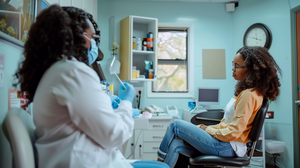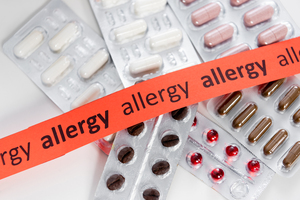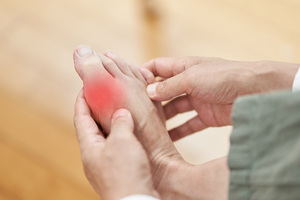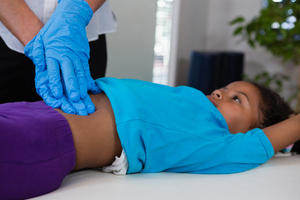Cyst Removal
A cyst is a closed pocket of tissue that resembles a sac. It can be filled with materials, including fluid, air, or pus, and can form anywhere in the body.
According to the National Institutes of Health (NIH), most cysts are not cancerous but can cause pain and affect your appearance. Cyst removal treatment can help you feel more comfortable and prevent these growths from becoming problematic.
How to remove a cyst
The method for cyst removal depends on the type and location of the cyst. Cysts can grow inside certain organs, including your lungs, lymphatic system, and kidneys, reports the NIH. It adds that other locations in which cysts can grow include the muscles, liver, brain, and eyes.
Cysts can also grow on your skin. For example, they can develop in areas where acne causes sebaceous glands to become clogged or can grow around debris that gets stuck in your skin.
The NIH says cysts can either be drained or removed with surgery. Cysts that grow outside your body on your skin can usually be drained. Cysts that grow inside your body can also be drained, then removed with surgery.
Medical procedures for cyst removal
Cysts on your skin can usually be removed by a skin care doctor, also known as a dermatologist. Cysts located on the inside of your body can be removed by surgeons who specialize in treating the organ where the cyst is located, according to the NIH. Drainage, fine-needle aspiration, surgery, and laparoscopy are common cyst sac removal methods.
Drainage
A cyst that contains pus or fluid is usually drained before it is surgically removed, notes the NIH.
First, your doctor will use a local anesthetic to numb the area around a cyst. Then, according to the University of Texas at Austin, your doctor will use a sharp knife to drain the cyst. Depending on its location, a shunt or fine needle may also be used to drain a cyst, reports the UNC School of Medicine.
After the cyst has been drained, your doctor may fill the abscess with gauze to reduce the risk of infection as it heals.
Fine-needle aspiration
Fine-needle aspiration involves using a fine needle to remove fluid or other materials from the cyst, says the National Cancer Institute. This is one of several drainage methods used to treat a cyst. Fine-needle aspiration is usually performed to drain cysts before removal by surgery.
Surgery
You may need surgery if the cyst is inside your body or if a cyst on your skin is painful or infected, reports the NIH. Surgery to remove a cyst usually involves general or local anesthesia to reduce pain and discomfort associated with the procedure. In addition, your doctor will use a scalpel to remove the cyst and surrounding tissue.
The NIH adds that the abscess may be packed with gauze afterward or that a tube may be placed in the abscess to drain fluid that accumulates after surgery. Your doctor will then remove the tube after the fluid has stopped draining from the wound.
Laparoscopy
Laparoscopy is a surgical procedure that is far less invasive than open surgery. According to the NIH, this cyst removal method is associated with less downtime, a faster recovery, and less scarring than traditional surgery.
First, your doctor will make a tiny incision in your skin near the location of the cyst. Then, a long, thin tube called a laparoscope will be inserted through the incision. The NIH says this tube has a camera at the end that allows your doctor to see the cyst more clearly on a monitor. Your doctor will then surgically remove the cyst and close your incision.
Home treatment aftercare
Aftercare and home treatment following cyst removal will depend on the method used to remove your cyst. Your doctor will give you detailed instructions on caring for your wound following your procedure. According to the NIH, aftercare for a cyst may involve changing gauze or bandages and taking your medications as prescribed.
Contact your healthcare provider if you have questions or concerns regarding caring for your abscess following cyst removal.
Risks of trying to remove a cyst at home
Removing a cyst at home is not recommended, as it may increase your risk for an infection or permanent scarring. Instead, consult with your healthcare provider for further guidance before trying to remove a cyst at home.
Home remedies
Your doctor may recommend treating your cyst using natural or at-home remedies before using an invasive treatment like surgery. In a case study presented by the NIH, a patient effectively treated her inflamed epidermoid (under the skin) cyst using a topical botanical tincture and herbal supplements, including echinacea, goldenseal, and berberine.
Ask your doctor about home remedies that may be effective at treating your type of cyst.
Find Cyst Removal near you
- Alabama
- Alaska
- Arizona
- Arkansas
- California
- Colorado
- Connecticut
- Delaware
- Florida
- Georgia
- Hawaii
- Idaho
- Illinois
- Indiana
- Iowa
- Kansas
- Kentucky
- Louisiana
- Maine
- Maryland
- Massachusetts
- Michigan
- Minnesota
- Mississippi
- Missouri
- Montana
- Nebraska
- Nevada
- New Hampshire
- New Jersey
- New Mexico
- New York
- North Carolina
- North Dakota
- Ohio
- Oklahoma
- Oregon
- Pennsylvania
- Rhode Island
- South Carolina
- South Dakota
- Tennessee
- Texas
- Utah
- Vermont
- Virginia
- Washington
- Washington DC
- West Virginia
- Wisconsin
- Wyoming
Cyst Removal FAQs
How do I get rid of a cyst?
A cyst can be effectively removed with surgery or drainage, reports the NIH. Ask your doctor for more information about how to get rid of cysts based on the type and location of your cyst.
How do I lance a cyst?
A doctor or surgeon can lance a cyst using a sharp knife or needle. Ask your healthcare provider about your available cyst removal options based on the type and location of your cyst.
How is a cyst drained?
According to the University of Texas at Austin and UNC School of Medicine, a cyst can be drained using a sharp knife or a fine needle. These instruments can remove any fluid, pus, or air from the cyst.
When should a cyst be removed?
A cyst should be removed if it is causing pain or affecting your appearance, suggests the NIH. A cyst that is infected should also be removed. Your doctor or a dermatologist can examine your cyst and determine whether it should be removed using drainage or surgery.
Are all cysts the same?
All cysts are the same in that they are closed pockets of tissue filled with fluids or other material. However, cysts can vary in size, type, and location and should be treated accordingly.
What happens if a cyst isn’t removed?
The NIH reports that most cysts are benign and do not always need to be removed. However, if a cyst is infected and isn’t removed, your infection may spread to other areas and harm nearby tissues.
Where can I get a cyst removal near me?
Cyst removal is a service performed by a wide range of healthcare providers, including dermatologists. An easy way to find cyst removal treatment is to either type “dermatologist near me” into your search engine or use the directory at Solv.
Solv features a directory of only the highest-rated healthcare providers in your area, so you can find quality treatment. Visit Solv today and find a dermatologist who can book a same-day or next-day appointment so you can discuss your available treatment options.
Solv has strict sourcing guidelines and relies on peer-reviewed studies, academic research institutions, and medical associations. We avoid using tertiary references.
Everyday Healthcare, Simplified
Expert advice to help you live your best life








